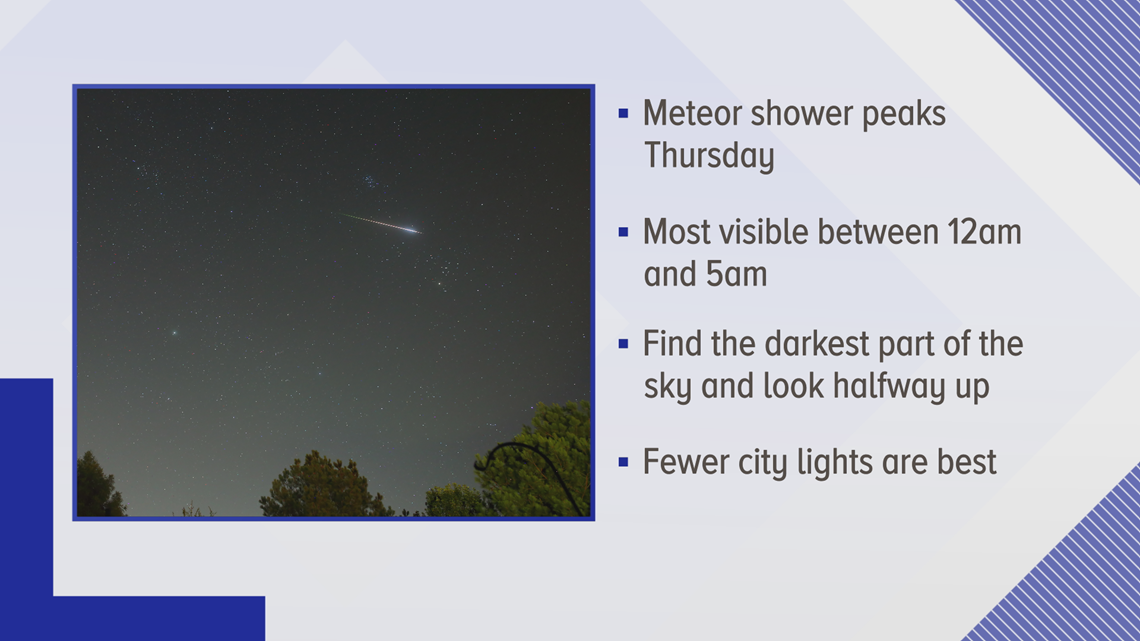MEMPHIS, Tenn. — One of the most active meteor showers of the year peaks this month, and you may be able to see some of the action from your own backyard!
The Perseid meteor shower occurs every year in late July and early August and is known to produce between 50 and 80 meteors per hour.
Brian Hancock with the Memphis Astronomical Society shares some helpful information and tips to see the most meteors.


What makes the Perseid meteor shower so special?
The Perseids aren't the most active meteor shower of the year, but they are the most active that happen in the summertime. Other meteor showers occur in December and January, meaning you'll have to brave the cold if you want to get a good view of those. Brian says if you're looking to see the most meteors while staying comfortable, the Perseids are the best bet. Perseids are also well known for producing fireballs - brighter meteors that produce colors and streak across the sky.
When are the most meteors visible?
The Perseid meteor shower peaks on the morning of Thursday, August 12th, but you could see meteors at any time in the next week or two. You'll likely see the most meteors between 12am and 5am.
What part of the sky should I look at?
Brian says that the Perseids will originate in the northeastern sky, but you may not want to look that way. Instead, he says simply find the darkest spot in the sky, look halfway up, and let your eyes adjust to that area.
How can I see the most meteors?
Luckily, it won't be a big challenge to see a at least few meteors. The moon will set by 10pm each night, leaving a dark sky after midnight for peak viewing. Brian says it may be easiest to set up shop in your own backyard and just look up.
What about the city lights?
To see the most meteors, you want to be as far away from city lights as possible. But you may not have to go as far as you think. Brian recommends checking out DarkSiteFinder.com to find nearby areas with low amounts of light pollution. He says as long as you aren't in one of the "white-out" areas in the middle of the city, you should still be able to see several meteors per hour.
Some final viewing tips
Brian says the real key to viewing the Perseid meteor shower is comfort. Find a nice spot in your own backyard, and be sure to bring a blanket, some water or coffee, and mosquito spray. You may go a few minutes without seeing any meteors and then see several within a minute, so don't give up hope. And remember, if Thursday morning is cloudy, try Wednesday or Friday as you'll still see plenty of action then.

